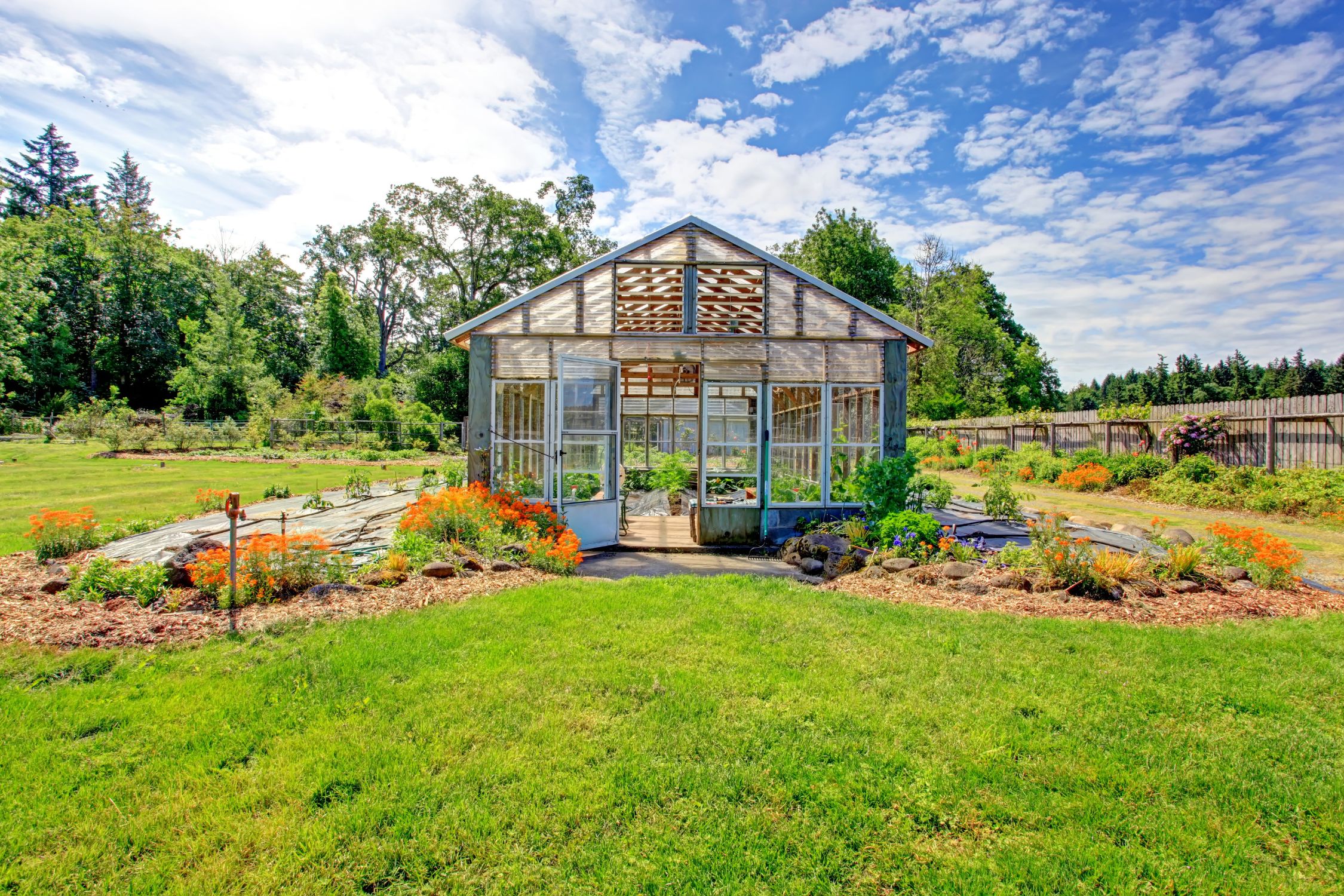
For anyone with a green thumb, building a greenhouse is an exciting step toward turning their gardening hobby into a true labor of love. Greenhouses provide the perfect environment to grow plants all year round; however, when choosing the materials for your new greenhouse, the options feel overwhelming. Discover the best materials for building a greenhouse that caters to your unique gardening needs and preferences.
Glass
Glass is often the gold standard for greenhouse materials. Its transparent nature allows optimal sunlight exposure and creates a warm, inviting aesthetic.
Traditional glass greenhouses have sturdy frames and glass panes that provide excellent insulation, ensuring your plants have an ideal environment to thrive in, no matter the weather outside. One notable downside to glass is its fragility. Depending on its temperament, it can break from hail or flying objects.
Polycarbonate
Polycarbonate is a popular alternative to glass, known for its unique combination of strength and insulation capabilities. This lightweight material is more resistant to breakage than glass, making it a safer choice, particularly if your greenhouse is in an area prone to severe weather or playful children.
In addition to its durability, polycarbonate excels at diffusing sunlight, ensuring an even distribution of warmth to your plants. The major downside, however, is that polycarbonate doesn’t offer the same level of clarity as glass, meaning your greenhouse may lack the aesthetics of its traditional counterpart.
Fiberglass
Fiberglass greenhouses offer a great middle ground between the glass classic and the polycarbonate powerhouse. This lightweight material shares many benefits with glass, such as clarity and insulation, but it’s more resistant to breakage.
Fiberglass greenhouses also maintain their clarity longer than polycarbonate, offering an aesthetic advantage. However, fiberglass is more expensive than polycarbonate, making it a less budget-friendly option.
Thermoplastic
Thermoplastics, such as polyethylene or PVC, are more options worth considering for your greenhouse. The many uses and properties of thermoplastics make them a cost-effective material that’s easy to work with, providing versatility in the agricultural structure design. The thermoplastic film is easily cut to fit any frame structure, and you can easily replace it without much hassle.
Moreover, they exhibit good light transmission properties and adequate heat retention for plant growth. However, a common disadvantage of thermoplastic greenhouses is their shorter lifespan compared to glass or polycarbonate due to the plastic’s susceptibility to degradation from sunlight and weather elements.
Wood
Last but not least, don’t forget the importance of a strong, durable frame for your greenhouse. While many greenhouses use aluminum or steel for their frames, wood is a fantastic alternative, particularly if you aim for a more rustic and natural aesthetic.
You can get wood from sustainable timber farms and paint or stain it to your liking, allowing you to customize the appearance of your greenhouse. It’s also an excellent insulator, providing ample strength and stability to support your chosen glazing material.
There are various materials to build a greenhouse, each with unique advantages and disadvantages. Choosing materials that provide a safe and stable environment for your plants and cater to your personal style preferences is essential. With the right materials, you’ll be well on your way to creating the perfect greenhouse for your gardening needs.



